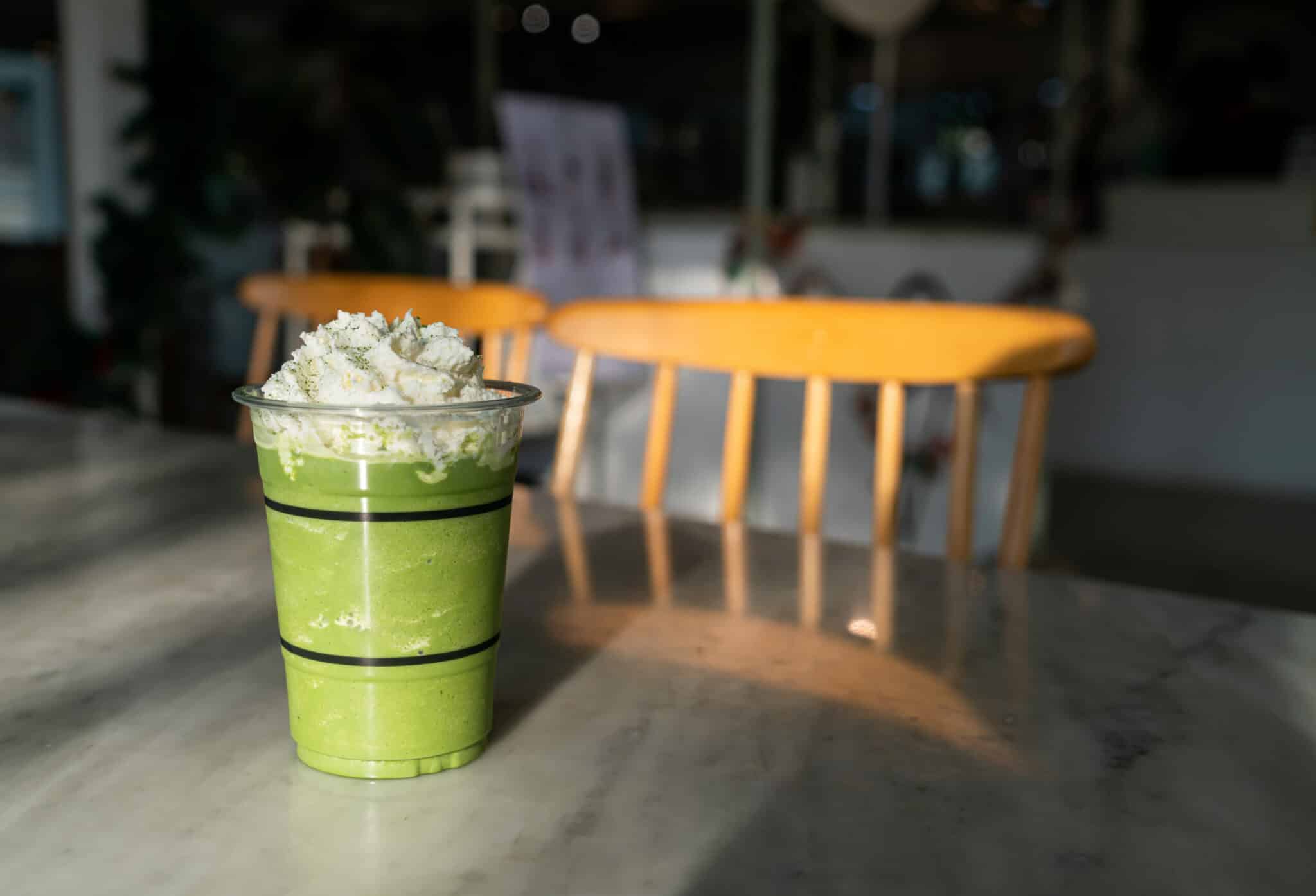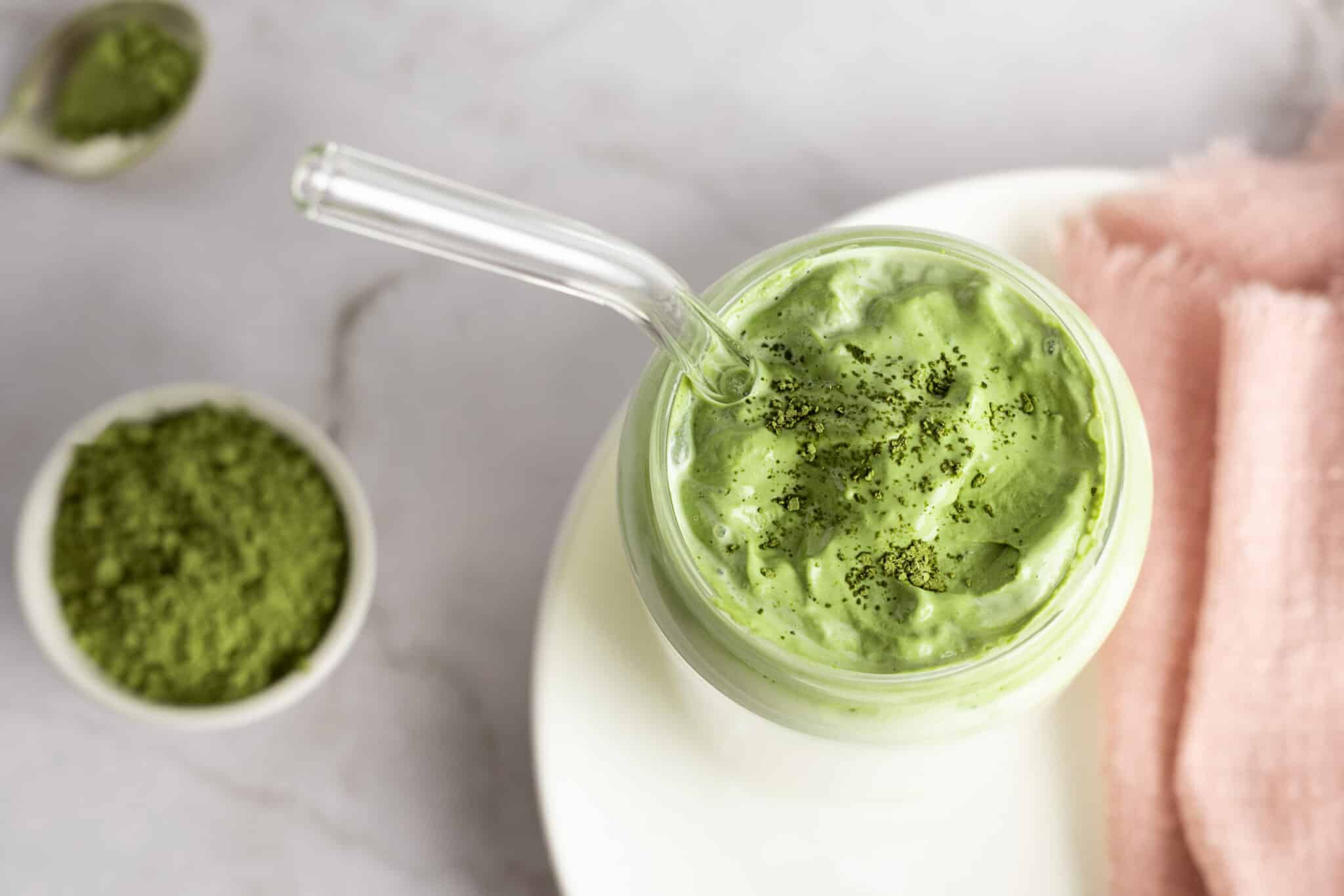Updated on May 15th, 2023
Matcha is a one-of-a-kind beverage. It can be difficult to fall in love with the vegetal taste, the color, and even the perfume of this plant right away. Despite this, the health benefits of matcha make it worthwhile to experiment with despite any first reservations you may have.
The only thing left to figure out is how to improve the flavor of your matcha tea or matcha latte. There are various matcha consumption methods available, aside from the traditional hot water and matcha approach that everyone can enjoy.

There are hundreds of matcha recipes available on the internet, but how can you make matcha taste good? The most typical method is to add a couple of drops of lemon juice to the water. Make sure that you are using a high-quality green tea powder and not substituting any other type of green tea powder. Before preparing the other ingredients, only one thing needs to be done: make sure the water is at the proper temperature. The matcha’s flavor and the scent will be enhanced due to this.
How to Make Matcha Taste Good?
Matcha’s grassy, umami flavor can be challenging to get used to. If you’re preparing it for the first time, don’t be afraid to experiment with a few drops of maple syrup or honey. If your matcha powder is very bitter, you may also want to add a little sugar to your tea.
Matcha is delightful, but it can be challenging to master when you’re just getting started. A little troubleshooting might be all you need if your tea tastes bitter. These are a few pointers I’ve picked up over the years to help you improve the flavor of your matcha.
- Use Matcha of Higher Quality
Start with high-quality matcha, which is the most crucial recommendation of all. There is no way to repair a genuinely terrible cup of tea. Look for a bright green powder in a color that has a similar texture to baby powder. It should also have a fresh, green scent. Matcha that is dark or dreary in appearance is a sure marker of poor quality.
This can be a touchy subject in the tea world, but I am a firm believer that matcha should only come from Japan. The climate in which tea is grown has a significant impact on its flavor. I’ve tried matcha from China and other parts of the world, but there’s always something lacking.
- Water at a Lower Temperature
Because matcha is a green tea, it’s critical to ensure your water isn’t even close to boiling. Every tea brand will have its own suggestions, but you can always tweak them to suit your own tastes. When the water temperature is at 160 degrees Fahrenheit, I love my matcha the most.
Kettles with adjustable temperatures make it much easier to achieve that sweet spot. If you don’t have one, I strongly advise you to use a thermometer. If you’re in a hurry, turn off the heat when observing pinhead-sized bubbles. It will also assist in chilling it down if you pour the water between two containers.
- Water Use Should be Minimal
Matcha may be made in various ways, but if you’re preparing it straight up, you’ll want to use a lot less water than you think. Matcha bowls are broad and deep to allow vigorous whisking, but they should not be completely packed.
Matcha can be prepared in two ways. Most people are familiar with the frothy bowl as usucha or thin tea. 1.5 to 2 grams of powder to 4 ounces of water is a standard ratio. Koicha, or thick tea, has a higher concentration of caffeine. With just 1 oz of water, the ratio increases to double that amount. Using a measuring cup until you develop a feel for how much water to use can be helpful.
- Sift it Off
Although matcha is such a tiny powder, it clumps readily. This makes it challenging to whisk and a lot less enjoyable to drink. Like you would flour before baking, Sifting it ahead of time can make a tremendous difference. A standard tea strainer or sieve will suffice for this task. I strongly advise using a filter specifically for matcha to avoid introducing undesired flavors. Before using the strainer, make sure it is scorched. Matcha that is wet makes a huge mess.
- Don’t Stir, Whisk
There is no such thing as a wrong way to make tea. However, some tea-making methods are clearly unsuccessful. Spoons, forks, and conventional kitchen whisks will all leave a lot of powder at the bottom of your cup when using matcha. What is the reason for this? Water does not dissolve matcha.
Don’t be alarmed by this! Traditional bamboo whisks, also known as chasen, are my preferred method. The amount of tines they have makes a big difference in uniformly scattering the powder. My kitchen whisk has around ten prongs, whereas a chasen will have 80 to 100. Milk frothers are also widely used. However, I find that they function best in higher cups.

What Flavor Goes Best with Matcha?
Citrus Is Amazing – Try It With Some Lemon
There are various reasons to enjoy some citrus, particularly lemon juice, in your matcha beverage, as it turns out. Although the flavor combination is exceptional, many swear by the lemon-tea combination. If you’re drinking matcha as a healthy beverage, the addition of lemon enhances the flavor.
If You don’t Like Matcha, How Should You Drink it?
To taste, enhance the sweetness.
Matcha’s grassy, umami flavor can be challenging to get used to. If you’re preparing it for the first time, don’t be afraid to experiment with a few drops of maple syrup or honey. If your matcha powder is very bitter, you may also want to add a little sugar to your tea.
Conclusion
Drinking matcha has a plethora of beneficial health effects. Drinking it has several health benefits in addition to its pleasant taste. By utilizing high-quality water, you will be able to create matcha that tastes delicious and is healthy for your health. The flavor of your drink will be ruined if you use poor-quality water. Thus you should never drink matcha made with poor-quality water. Before brewing your tea, make sure that the water you are using has been well filtered.
A few additional suggestions are in order when it comes to brewing matcha. Remember that matcha’s original vegetal flavor is best kept when it is not seasoned with other ingredients. The more effort you put into preparing your drink, the more likely you will be satisfied with it. A few additional ingredients will help to bring out the best in it. If you don’t have the time or patience to prepare your own, you can substitute an unflavored sweetener for convenience.
